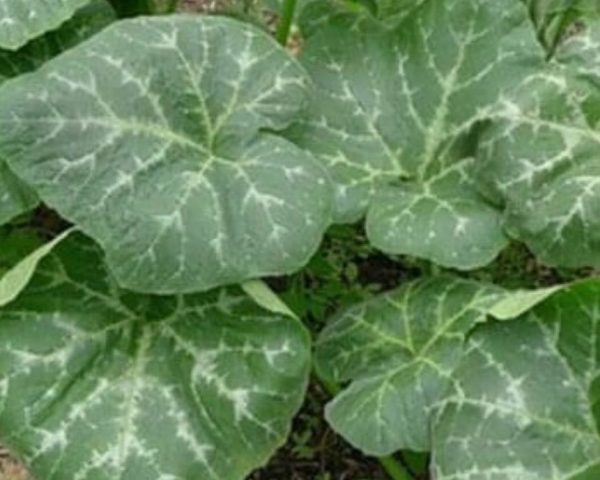PUMPKIN LEAVES MEDICINAL USE AND RECIPE
Pumpkin leaves, otherwise referred to as fluted pumpkin leaves because of it hollow stalk, hence the flute in its name. its scientific name is Telfairia occidentalis.
The tropical vine cultivated in West Africa is a vegetable leaf. Local names among the West African leaf are “Ugu” in the Igbo language, “Ikong Obong” in the Efik and Ibibio languages, “Eweroko” in Yoruba, “Ebuvhenhen” amongst the Edos.
It is a common delicacy in the eastern parts of Nigeria as the Yorubas refer its soup as “Efo Igbo” (Igbo’s Vegetable).
Read Also: Ebun Oloyede Biography and regrets
The leaf is commonly used in the preparation of mouth-watering cuisines like Yam and Vegetable stew, Egusi soup, and Ogbono soup amongst others.
It can also be steamed to garnish other dishes like Jollof Rice, Porridge beans and yam, sauces, stews, and could also be used as a salad constituent, base material in the preparation of herbal medications in the form of smoothies.
The Recipe
The fruit pods are very big and can be so massive that it becomes difficult to carry alone. Although this fruit is edible, its seeds are also high in protein and fat and contribute massively to a balanced diet.
It is not rare for some people to consume the seeds due to its high medicinal and nutritional content but some rather not. It is a drought-tolerant, dioecious perennial and is grown trellised due to its a vine-like structure.
Pumpkin leaves are cultivated vertically on trestle-like structures; however, it can be allowed to spread flat on a field.
One major advantage of the latter is that the fruit pods suppresses the growth of weeds. Seeds are planted directly in the soil, typically in the groups of three to increase output in case of a failed germination.
Read Also: Sarah Baartman Story | Everything We Know
The fruits are harvested between October and December. The seeds are subsequently harvested and dried; a portion, consumed and the other stored for the next planting season.
Successful growth is ensured when seeds are planted on well-drained soils. Seed viability and longevity of leaves are ensured that they are stored in sealed, polythene bags at a temperature between 2-4°C as it is a highly perishable crop produce.
Small lesions can induce pod rot and can cause very serious damage to the entire fruit, rendering it unusable. Improper storage of the leaves can also induce rapid loss of nutrients and water content.

Pumpkin Leaves Medicinal Use
This plant is a haven of health benefits as many consumers with little to no know-how as to how it partakes in a healthy feeding lifestyle. Pumpkin leaves have a healthy amount of vitamin A, vitamin C, Calcium, antioxidants, and antimicrobial agents as well as other major mineral salts and vitamins.
Having health benefits like fighting Cancer, increasing fertility, boosting the immune system, lowering cholesterol levels, combating rise in blood sugar levels, alleviating convulsions, treating cardiovascular diseases, used as blood tonic due to its high proteinous and ferrous content and numerous advantages to the skin.
Read Also: Victor Osimhen Biography | Origin, Everything we know
The seeds are composed of 27% crude proteins and 53% fat which are considerably high nutritional content for healthy living.
As there are many causes of illnesses and conditions around the globe today, Cancer has become a mainstream issue, vehemently fought against by many individuals and health organizations worldwide with very exorbitant fees for treatments and drugs.
However, the presence of antioxidants and anti-inflammatory agents in pumpkin leaves help fight this illness.
It also contains chemicals that possess chemo- suppressive properties which makes it a very viable treatment for cancer. It also has content that helps in the treatment of convulsions, a subsidiary of epilepsy which can be a very terrible disorder, a bottle containing young leaves of this plant drenched in coconut water and salt can be used to counteract this effect.
It is antioxidant properties like vitamin A, alkaloids, tannins, etc. have been researched to boost the functionality of the testicles and improve sperm count.
Also, the hypoglycemic effect of pumpkin leaves helps keep blood sugar in control. Studies have shown that liquid extract from the leaves acts as anti-diabetic properties which help reduce and regulate the glucose level of diabetic patients.
Owing to the high content of vitamins and mineral salts, pumpkin leaves have shown to be a high booster of the immune system.
Its calcium content is crucial to healthy bones and teeth as calcium is necessary to prevent osteoporosis and maintain bone density. Its fibrous leaves are also rich in iron which aids muscles in storing and utilizing oxygen. It is also believed to enhance lactation in nursing mothers as it is highly proteinous, which is very necessary for women in post-pregnancy periods.
As a plant food, it also reduces the risk of obesity as it disrupts the buildup of fat in the body and actively participates in the burning of excess fat present in the body. Research also shows that it promotes a great Body Mass Index.
Read Also: Maureen Esisi Biography | Everything we know
When picking the leaves, it is advisable to go for the younger, fresh leaves as the older ones have thin thorns growing on them and are also very inedible. Younger leaves have thorns on them too, but they are still tender and can be eaten.
Before using pumpkin leaves in any delicacy, they are properly plucked from their stems and rinsed to remove dirt.
It is advised not to over rinse to avoid erosion of water-soluble vitamins. After rinsing, they are properly shredded and then cooked with spices and seasonings for garnishes, soups, stews, etc.
Disclaimer: Any action you take upon the information presented in this article is at your own risk. This article is strictly for informational purposes. The author is not a medical practitioner and as such you should not substitute the information here for professional advice.











